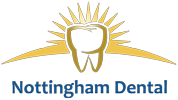 While everyone’s bite is unique, many people suffer from some form of bite misalignment. Here are a few common problems that can be corrected with dental braces.
While everyone’s bite is unique, many people suffer from some form of bite misalignment. Here are a few common problems that can be corrected with dental braces.
Few people are born with a “perfect” smile. With a little help, modern orthodontics can help the rest of us get a picture-perfect smile and a functional bite.
While everyone’s bite is unique, most of us fall into one of several bite categories with varying severity. Here are some of the most common bite problems:
Open Bite – There are two types of open bite. When a patient has an anterior (front teeth) open bite, the top and bottom teeth don’t overlap properly when the patient’s mouth is closed. A posterior (back teeth) open bite happens when a patient’s back teeth don’t touch when the front teeth are closed. Sometimes an open bite is caused by thumb-sucking or a tongue thrust and can make taking a bite of certain foods like pizza or a chicken wing difficult.
Crossbite – Patients with a crossbite have upper teeth that fit inside their bottom teeth. You can have an anterior (front teeth) or posterior (back teeth) crossbite. A crossbite can affect one tooth or a whole side of a person’s mouth depending on the severity. If left untreated, a crossbite can cause stress on the temporomandibular, or jaw, joint causing discomfort and headaches, as well as tooth enamel erosion. Most dentists recommend treatment for a crossbite as early as possible to prevent permanent damage.
Crowding – One of the most common reasons for orthodontic treatment is crowding. If you or your child have a small jaw or large teeth, crowding can occur, making the teeth grow in crooked, rotated or overlapped. If crowding is not fixed, it may not only affect your self-confidence but can make teeth difficult to clean. This can cause cavities and periodontal disease.
Deep Bite – A deep bite is visible when a patient closes their mouth, and the top front teeth almost entirely cover the bottom front teeth. In some cases, their bite may be so deep the bottom teeth touch the roof of the mouth damaging the upper gums. When not treated properly, enamel erosion, gum issues, jaw pain, headaches, and a “gummy” smile can also occur.
Underbite – When a patient has an underbite, their lower jaw sticks out farther than their top jaw, which causes a “Bulldog” appearance. This can be caused by either the upper jaw being too small, or the lower jaw being too large. Underbites are usually inherited and can cause jaw pain, headaches, and tooth enamel erosion.
Overbite – An overbite is caused when a patient’s lower jaw is too small, or their top jaw is too large, causing the top teeth to stick out too far over the bottom jaw. Thumb sucking can make an overbite worse. If left untreated, overbites can cause speech delays, headaches, and eating difficulties.
These bite problems rarely correct themselves as a child grows and develops, and symptoms usually get worse with age. Early diagnosis and treatment are generally recommended, but even adults can benefit from orthodontics to solve these issues. It’s important to remember that it’s never too early or too late to have a beautiful smile that allows you to chew properly and speak clearly.

